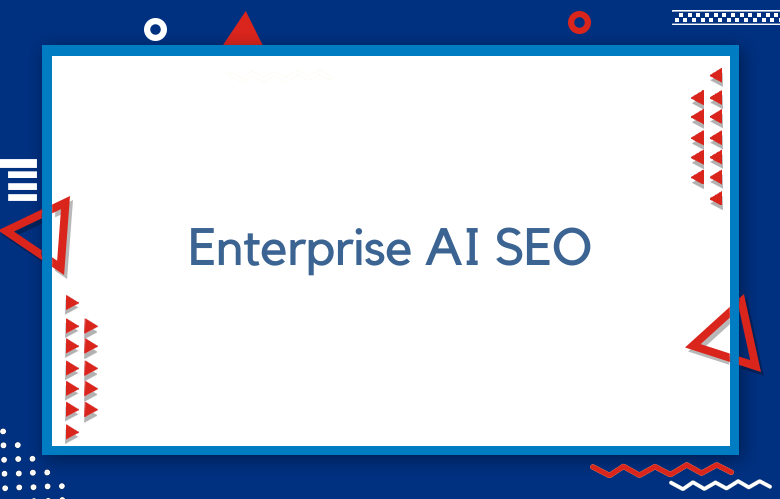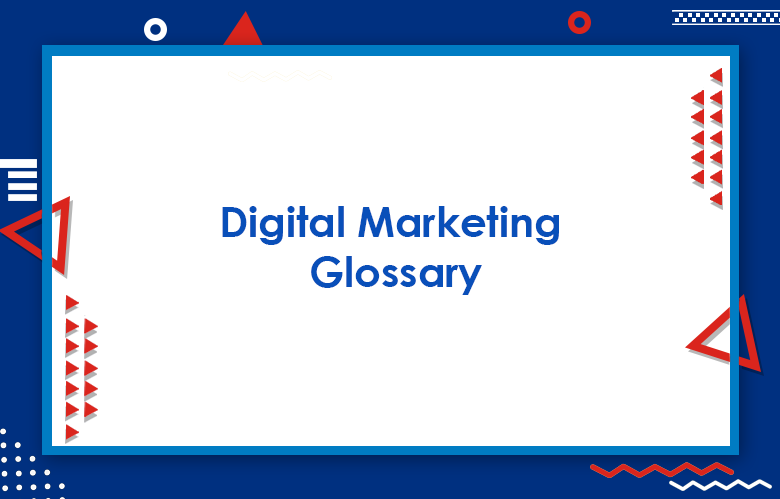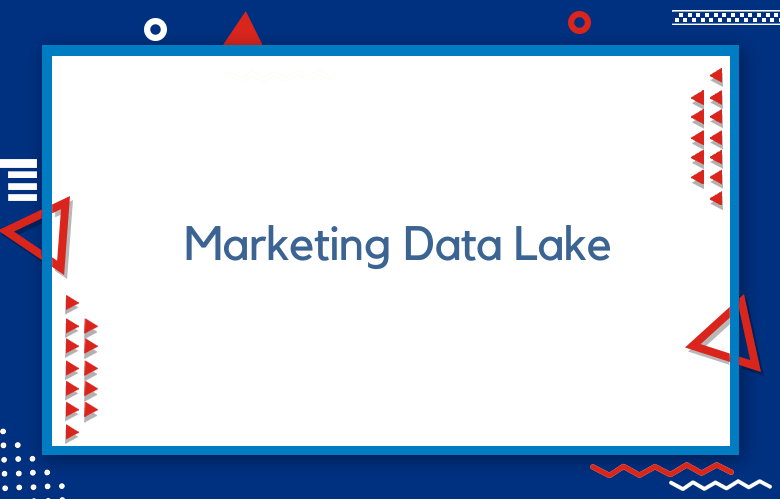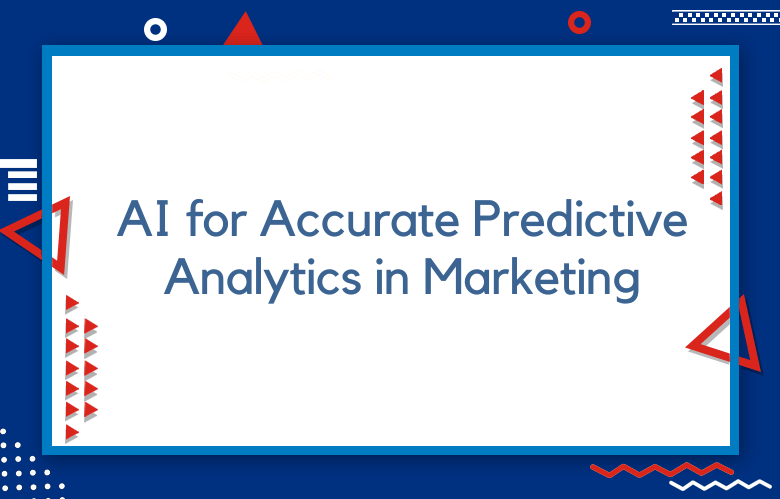Enterprise AI SEO: Leveraging Artificial Intelligence for Scalable Search Optimization

The integration of artificial intelligence into enterprise search engine optimization marks a major shift in digital marketing strategy.
With the AI-powered SEO and content optimization sector projected to reach $67 billion by 2025 and reporting a 22% compound annual growth rate since 2020, large organizations are gaining new capabilities to scale organic search while improving ROI by 30 to 50%.
This change extends beyond automation. It redefines how enterprises manage content optimization, technical SEO, and user experience across vast digital ecosystems.
Enterprise AI SEO uses artificial intelligence to manage SEO across large websites. It automates keyword research, content creation, and optimization. This improves consistency and efficiency.
AI tools offer data insights to inform strategic decisions. Human oversight is still required to ensure accuracy and brand alignment.
Enterprise AI SEO uses artificial intelligence to optimize large websites. It automates keyword research, content generation, and performance analysis. This reduces manual effort, speeds up production, and helps maintain consistency across thousands of pages.
Key Points:
- Enterprise AI SEO supports sites with extensive content and complex needs.
- Automation reduces manual workload and increases content output.
- Tools like Jasper and BrightEdge help optimize pages quickly and consistently.
- AI-powered analytics track performance and inform strategy.
- Editorial teams must verify the quality of content and ensure compliance with relevant regulations to maintain credibility and integrity.
- Enterprise AI SEO uses AI to enhance SEO for large organizations through automation and adaptation to AI-powered search.
- It scales tasks like keyword research and content optimization, but the field is evolving alongside changing search behaviors.
- Tools like Semrush and BrightEdge often serve as core platforms, though approaches vary by enterprise needs.
- Successful strategies integrate SEO with marketing and prioritize AI readability, adapting to industry and search engine trends.
What is Enterprise AI SEO?
Enterprise AI SEO leverages artificial intelligence (AI) technologies, including machine learning (ML), natural language processing (NLP), and predictive analytics, to optimize SEO strategies for large-scale businesses.
It automates and scales efforts to improve organic visibility, user experience, and conversions across complex digital environments.
Enterprise AI SEO utilizes artificial intelligence to enhance search engine optimization for large organizations.
It automates complex tasks, delivers insights, and adapts strategies as AI-driven search platforms, such as Perplexity and ChatGPT, continue to evolve.
Why Enterprise AI SEO Matters
Large enterprises often manage thousands of web pages, making manual SEO inefficient. AI automates keyword research and performance tracking, securing visibility across emerging AI-powered search engines.
Key Tools and Strategies
- Semrush Enterprise: Traffic forecasting and keyword analysis.
- BrightEdge: AI-powered content insights and automation.
- Core Approaches: Optimize structured data, monitor features like Google’s AI Overviews, and ensure content reads well for AI systems.
Overview of Enterprise AI SEO
Enterprise AI SEO leverages AI technologies to enhance SEO strategies for complex websites. With the rise of AI search tools, users are discovering content via chatbots and generative snippets, reshaping the requirements for optimization. As of July 2025, AI-driven SEO has become essential for scaling SEO in large organizations through automation and predictive insights.
AI Roles in Enterprise SEO
- Task Automation: BrightEdge Autopilot handles keyword research, content optimization, and tracking.
- Generative Content: Platforms like Bloggr.AI produce SEO-ready articles at scale.
- Predictive Analytics: Semrush Enterprise forecasts traffic trends and search demand.
- Efficiency Gains: Enterprises report up to 120% growth in traffic within a year by using AI platforms.
- – Citations needed for claim percentages and adoption statistics.
Adjusting to AI-Driven Search
- AI-First Engines: Google still holds ~92% market share, but Perplexity and ChatGPT search may gain traction in 2025.
- Generative Results: Google’s AI Overviews shape how users find information; optimizing for those snippets is essential.
- Multimodal Search: Enterprises must include voice and visual optimization, especially alt text and conversational phrasing.
Technical SEO for AI Compatibility
- Utilize structured data and schemas to assist AI systems in interpreting content.
- Build authority through expert content and robust link strategies.
- Monitor content in real time to match frequent AI algorithm updates.
Strategic Recommendations
- Optimize for both traditional and AI-generated search results.
- Ensure visibility on AI-first platforms.
- Leverage AI for analytics and task automation.
- Deliver SEO ROI via dashboards for executive stakeholders.
Trends and Challenges
- Wearables: 537.9 million device shipments in 2025 are expected to impact search behavior.
- Significant Tech Ecosystems: Integrations like Apple’s partnership with ChatGPT and Amazon’s collaboration with Anthropic are shaping the future of search.
- Conversational Queries: Users use voice and multi-step interactions on multiple devices.
- Challenges include keeping pace with algorithm updates, coordinating across teams, and ensuring global scalability.
Key Benefits for Enterprises
- Scalability: Automates repetitive tasks like keyword research and meta tag updates across thousands of pages.
- Data-Driven Insights: Analyzes large datasets (user behavior, competitor content, and trends) to identify growth opportunities.
- Real-Time Adaptation: Adjusts strategies dynamically in response to changes in the algorithm or market conditions.
- Cost Efficiency: Reduces manual workload while improving accuracy in audits, content creation, and link acquisition.
- Personalization: Aligns content with user intent to boost engagement and rankings.
Core Applications of AI in Enterprise SEO
Keyword Research and Analysis
Platforms like BrightEdge and Searchmetrics use AI to identify high-value keywords, forecast trends, and evaluate competitor gaps.
Example: Automatically prioritize keywords based on search volume, difficulty, and relevance to business goals.
Content Optimization and Creation
Tools such as Frase, Clearscope, and Jasper generate SEO-optimized content, suggest headings, and evaluate top-performing pages.
Enhance existing content by utilizing semantic keyword suggestions and implementing readability improvements.
Technical SEO Audits
AI-enabled platforms, such as DeepCrawl and Screaming Frog, detect crawl errors, broken links, duplicate content, and speed issues.
Predictive analytics highlight technical problems before they affect search performance.
Competitor Analysis
Tools like Ahrefs and SEMrush reverse-engineer competitor strategies, backlink profiles, and content success.
Example: Discover keywords competitors rank for, but your site does not.
Voice and Visual Search Optimization
NLP models optimize content for voice queries using conversational phrasing. Image SEO tools automatically generate alt text.
Example: Google’s RankBrain favors content that matches voice-search intent.
Structured Data and Schema Markup
AI tools such as WordLift automatically generate schema to support rich snippets and improve click-through rates.
Local SEO and Hyper-Personalization
Platforms like Yext use AI to enhance local listings and tailor content based on user location and preferences.
Predictive Analytics and Forecasting
Machine learning models forecast changes in ranking, traffic trends, and campaign ROI.
Example: Accuranker provides forecasting tools to model SEO outcomes over time.
Popular AI SEO Tools for Enterprises
- BrightEdge: Combines AI and performance data to guide large-scale SEO strategies.
- Market Brew: Simulates search engine behavior to uncover ranking factors.
- Surfer SEO: Analyzes high-performing content to recommend keyword groupings and content structure.
- PaveAI: Translates analytics data into SEO-focused reports and insights.
- WordLift: Uses AI to implement semantic SEO through entity-based content organization.
Challenges to Address
- Quality Control: AI-generated content may lack depth or context. Human review is essential.
- Data Privacy: Ensure compliance with GDPR, CCPA, and similar regulations when using user data for personalization.
- Integration Complexity: Connecting AI tools with legacy CMS and analytics systems may require significant development resources.
- Overreliance on Automation: Excessive automation can result in generic content. Use AI for efficiency, not strategy.
- Cost: Enterprise AI platforms, particularly custom solutions, often entail substantial upfront and ongoing maintenance costs.
Best Practices for Implementation
- Start Small: Test AI tools on a limited number of pages or campaigns before implementing them on a full scale.
- Hybrid Workflow: Use AI for data-heavy tasks but retain human oversight for strategy and creative output.
- Monitor KPIs: Track key metrics, such as organic traffic, CTR, and conversions, to measure their impact.
- Stay Current: Evolve strategies to match updates such as Google’s MUM algorithm.
- Prioritize User Experience: Ensure AI-driven content aligns with performance standards (e.g., Core Web Vitals, mobile responsiveness, accessibility).
Enterprise AI SEO: Strategic Framework for 2025
1. The Shifting Search Environment
Fractured User Behavior
Search behavior now spans AI chatbots (such as ChatGPT and Perplexity), social platforms (including TikTok and Instagram), and multimodal interfaces (including voice and visual). Nearly 50% of consumers use AI-powered tools for their queries, although traditional search engines still account for the majority of traffic.
Zero-Click Search Growth
AI Overviews appear in 11% of Google queries, a 22% year-over-year increase. These reduce click-through rates by 30%, shifting focus from rankings to citation visibility.
Market-Specific AI Priorities
- B2B: AI favors case studies, ROI-focused content, and subject-matter expertise.
- E-commerce: AI recommendations rely on pricing data and a streamlined user experience.
2. Technical Foundations for AI Interpretation
Structured Data and Schema
Utilize schema types, such as product specifications, Q&A formats, and detailed author bios, to assist AI systems in accurately interpreting content. This can increase citation rates by 3×.
Crawl Budget Efficiency
For large sites, log file analysis helps prioritize high-value content and resolve issues like duplicate metadata or broken links.
Core Web Vitals and Device-Specific Optimization
Mobile AI results prioritize fast, responsive pages. Desktop users often prefer detailed, analytical content. Tailor accordingly.
3. Content Authority and AI Trust Signals
Entity-Based SEO
Focus on topic clusters over individual keywords. AI rewards deep coverage supported by expert quotes, proprietary data, and cross-referenced sources.
E-E-A-T Enhancements
- Expert Input: Include subject-matter experts and provide detailed bios that list their qualifications.
- First-Party Data: Use proprietary research to improve trust and reduce AI-generated inaccuracies.
- Multimodal Assets: Include video content (YouTube citations rose 121% in e-commerce) with transcripts and image schema to increase visibility.
4. Metrics and Attribution in the AI Context
Traditional SEO metrics are no longer enough. Track AI-specific performance indicators:
AI Mention Rate
Citation Authority
Prompt Effectiveness
Attribution Adjustments
Tag AI referral traffic from tools like ChatGPT and Perplexity using regex filters in analytics platforms. Track branded search volume increases as a signal of AI-driven discovery.
5. Operationalizing AI SEO
Platform-Specific Optimization
- Google AI Overviews: Prioritize local data and recency.
- ChatGPT: Emphasize detailed, conversational content.
- Perplexity: Optimize for research-heavy, source-cited content.
Workflow Integration
Deploy AI for high-volume tasks. For example, 45% of marketers use AI for social copywriting, and 44% use it for SEO analysis. Maintain human oversight to ensure compliance with E-E-A-T principles and mitigate bias.
Executive Buy-In
Link SEO outcomes to business value. For example, highlight that optimized pages contributed to a 20% lift in conversions to justify investment in infrastructure.
6. Preparing for Emerging Interfaces
Voice and Visual Search
With 40% of Gen Z using voice assistants, structure content to support natural language queries and image schema.
Wearable and IoT Interfaces
With over 537 million wearable shipments projected in 2025, prepare for new interfaces like AR glasses and AI pins by creating short, context-aware content.
Real-Time Monitoring
AI results shift frequently. Utilize tools like Clarity ArcAI to monitor citation visibility and adjust strategies daily.
Key Challenges and Solutions
- Misinformation Risk: 78% of marketers cite AI hallucinations as a concern. Mitigate with fact-checking protocols and clear source attribution.
- Technical Debt: Utilize automated testing tools to scale schema deployment and efficiently identify errors.
- Skills Gap: Implement quarterly training sprints to upskill teams in prompt engineering and Generative Engine Optimization (GEO).
Action Plan
- Audit: Analyze visibility across AI platforms using tools like BrightEdge GENAI.
- Optimize: Improve 10 high-intent pages per month with schema markup and expert citations.
- Track: Build dashboards that monitor AI Mention Rate and Conversion Velocity.
- Iterate: Run monthly prompt tests to understand how AI platforms present your content.
Enterprises that focus on topic depth and respond quickly to AI system behavior will capture over 60% of generative search visibility by 2026. Success will depend on combining technical precision with rapid execution.
Current State of Enterprise AI SEO
Enterprise SEO has historically involved managing extensive digital ecosystems with millions of indexed pages, complex technical structures, and broad keyword portfolios.
AI has reshaped this field by applying machine learning to automate critical functions, such as keyword research, content optimization, backlink analysis, and website audits.
The shift replaces traditional keyword-focused methods with approaches that emphasize user intent, semantic understanding, and conversational search patterns.
Search engines now rely on AI algorithms such as Google’s RankBrain, BERT, and MUM to interpret queries and content with greater nuance. Enterprises must adapt their optimization strategies accordingly.
AI Overview Integration
Research indicates that over 13% of Google results now include AI Overviews, and 88% of those link to content-rich sites, such as blogs, instead of transactional pages. This forces teams to optimize for AI visibility while sustaining traditional ranking performance. (Citation needed)
Key AI SEO Components and Technologies
Modern enterprise AI SEO includes ten core components. The most impactful are:
- Personalization Engines: Deliver up to 50% ROI improvement. (Citation needed)
- Technical SEO Automation: Offers approximately 45% ROI gains. (Citation needed)
- Predictive Analytics: Drives around 40% ROI enhancement. (Citation needed)
High-Adoption Technologies:
- Content Optimization AI leads adoption at about 78%. It utilizes NLP and machine learning to analyze user intent, identify keyword trends, and structure content according to semantic principles.
- Technical SEO Automation, via platforms like Botify, conducts large-scale audits across millions of pages, identifying broken links, indexing issues, and speed problems. This saves enterprises around 25 hours weekly and boosts ROI through enhanced site performance.
- Predictive Analytics tools forecast content performance using historical data and user behavior, helping enterprises allocate resources efficiently and anticipate competitor strategies.
Leading Enterprise AI SEO Platforms
- Semrush Enterprise supports major brands like Salesforce, SAP, TikTok, and Samsung. Its AI-powered automation and forecasting can reduce analysis time by 20–30 hours monthly.
- SEOClarity (“Sia”) integrates with ChatGPT to automate content creation, keyword clustering, and optimization for enterprises like Dell and Petco, offering custom data segmentation and API support.
- BrightEdge excels in content optimization. One customer experienced a 74% revenue increase and a 30% growth in search revenue; another saw a 61% increase in site visits and a 73% reduction in bounce rates.
Trends and Future Outlook
- Hyper-Automation grew by an estimated 85.7% from 2024 to 2025.
- Multimodal Search Optimization is growing at the fastest rate, with a 133.3% increase, reflecting the demand for voice, image, and video optimization.
- Personalized Search Results increased by approximately 125% in adoption.
AI Overviews appear frequently, driving zero-click searches. Enterprises must optimize for featured snippets, knowledge panels, and AI-generated summaries, striking a balance between visibility and click-through objectives.
Emerging Capabilities
- Generative AI now features in boardroom discussions at nearly 98% of companies, though successful use still relies on human oversight for quality and compliance with E‑E‑A‑T standards.
- Predictive SEO Forecasting is doubling in use year over year.
Implementation Challenges
Scaling Execution
Managing millions of pages without losing quality demands AI. Tools like SEOClarity’s Sia can automate bulk optimizations while preserving standards.
Resource Allocation
To gain stakeholder support, focus first on components such as keyword research, achieving 85% adoption, and a 10-hour weekly savings, to demonstrate measurable value.
Adapting to AI-First Search
Optimize content structure, schema, and conversational phrasing for both AI Overviews and traditional organic results.
Technical Integration
Choose platforms with multi-CMS support and robust APIs. Tools like Alli AI integrate with WordPress, Shopify, and Drupal to streamline the deployment process.
Performance Measurement
Track both traditional and AI-driven metrics: content velocity, organic traffic, keyword rankings, and conversion rates. Technical automation can save 25 hours weekly; predictive tools add 20 hours, and content optimization another 20 hours.
The growth of the enterprise AI SEO market reflects more than a technological upgrade; it represents a fundamental transformation in how organizations drive organic discovery across web and AI channels.
The $67 billion industry indicates that integrating AI into SEO strategies is now essential for achieving competitive growth.
Future Trends
- Advanced NLP for Intent Recognition: AI will enhance its ability to detect user goals, enabling the creation of more targeted content.
- AI-Assisted E-E-A-T Optimization: Emerging tools will evaluate expertise, authoritativeness, and trustworthiness for sensitive content categories.
- Integrated AI Platforms: All-in-one SEO systems will combine content, performance, and technical modules to provide a comprehensive solution.
- Local SEO Automation: AI will handle optimization for “near me” searches in real time.
- Ethical AI: Transparent models and avoidance of manipulative tactics will become standard practice.
Summary
Enterprise AI SEO combines automation with analytical intelligence to scale SEO across large digital ecosystems.
It complements human expertise by handling volume and complexity, allowing strategists to focus on high-impact decisions.
Success depends on selecting the right tools, maintaining editorial oversight, and adapting quickly to shifts in technology and user behavior.
Frequently Asked Questions (FAQs)
What is Enterprise AI SEO?
Enterprise AI SEO refers to the application of artificial intelligence technologies, including machine learning and natural language processing, to optimize SEO strategies for large-scale websites. It automates tasks like keyword research, content creation, and performance analysis across thousands of pages.
Why is AI important for enterprise SEO?
AI is crucial because it automates repetitive SEO tasks, offers predictive insights, and helps scale content and technical optimizations across extensive digital ecosystems, improving ROI and reducing manual workload.
What tools are commonly used in Enterprise AI SEO?
Popular tools include BrightEdge, Semrush Enterprise, Jasper, Frase, Surfer SEO, SEOClarity, WordLift, and DeepCrawl. These platforms automate and optimize various parts of the SEO workflow.
How does AI impact keyword research?
AI platforms analyze search trends, intent, and competition to suggest high-value keywords that drive traffic and revenue. They forecast performance and prioritize keywords based on business goals, reducing manual research time.
Can AI generate SEO-optimized content?
Yes. Tools like Jasper and Bloggr.AI use generative AI to create SEO-friendly articles, headlines, and meta tags. Human editing is still essential to ensure quality and brand alignment.
What is the role of structured data in AI SEO?
Structured data helps AI systems and search engines better understand website content. It increases the likelihood of being featured in rich results, such as Google’s AI Overviews or knowledge panels.
How do enterprises measure the success of AI SEO?
Key metrics include organic traffic, AI Mention Rate, prompt effectiveness, conversion velocity, and citation authority. Dashboards that integrate these metrics help tie SEO outcomes to business impact.
What are the challenges of implementing AI in SEO?
Challenges include maintaining content quality, integrating AI tools with existing systems, ensuring regulatory compliance, preventing over-automation, and justifying costs to stakeholders.
How is AI changing search behavior?
Searches are increasingly conducted via chatbots, voice assistants, and multimodal interfaces. Zero-click searches and AI Overviews are reshaping optimization strategies by reducing reliance on traditional rankings.
How can enterprises stay ahead in AI-driven search?
They should adopt structured content frameworks, prioritize E-E-A-T (Experience, Expertise, Authoritativeness, Trust), integrate AI tools for real-time monitoring, and adapt quickly to algorithm and interface changes.



